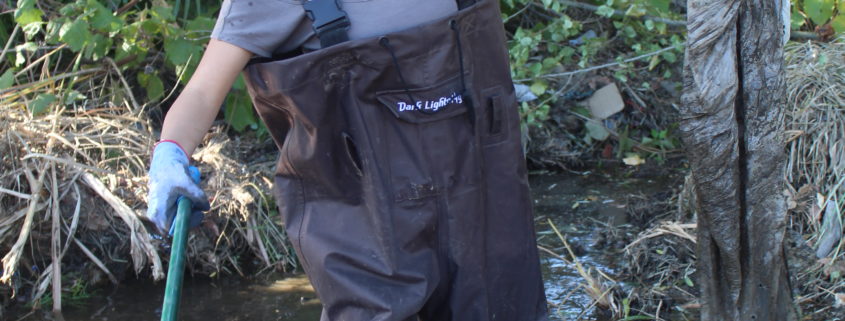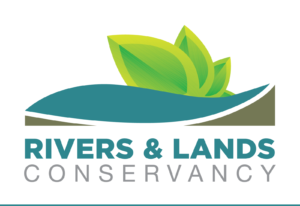
The Santa Ana River offers lessons in local ecology, environmental stewardship and connection.
Most of us have childhood memories that capture our enthusiasm and appreciation for water in the heat of Southern California’s summers. Perhaps it was the simple joy of playing in the sprinklers of our front yard. Or maybe you had the good fortune of enjoying the wonders and curiosities of the wild Santa Ana River.
My parents, longtime City of Riverside residents, have regaled me with stories of carefree childhood afternoons spent exploring the banks of the Santa Ana River. Their anecdotes include tales of chasing lizards and catching frogs along the sandy banks, searching for tadpoles and turtles within the shallow pools, and skipping rocks and cooling off bare feet at the river’s edge. I have heard these stories echoed many times by community members of the same generation who’ve relayed similar experiences to me while doing my outreach work along the waterway.
Water is part of our heritage.
The United Nations Educational, Scientific and Cultural Organization (UNESCO) describes water heritage as “the cultural significance of water and the importance of water management.” In Southern California, that heritage weaves through our growing urban and suburban communities in interesting ways.
Flowing for approximately 100 miles through San Bernardino, Riverside, and Orange counties,
the Santa Ana River is Southern California’s longest waterway. It was described as a biological hot spot by renowned biologist E.O. Wilson, as he noted its path through rich landscapes. The Santa Ana River winds through the alpine meadows and conifer forests of the San Bernardino Mountains, flowing through the chapparal and coastal sage scrub communities of the Inland Empire and ending at the sandy dunes of Newport and Huntington Beach.
Today, in Riverside and San Bernardino Counties, the Santa Ana River remains uniquely un-channelized. Local community members, Ruth Anderson Wilson and Martha McLean advocated saving the river from a completely concrete fate in the 1960s. Now, this portion of the river remains an important wildlife corridor for state and federal endangered species like the Santa Ana sucker (Catostomus santaanae), the least Bell’s vireo (Vireo bellii pusillus) and the Santa Ana River woolly-star (Eriastrum densifolium ssp. Sanctorum). While the river currently faces a multitude of complex and sometimes controversial challenges, it remains a resource for wildlife and place of discovery and learning for the community, especially our youth.
Textbook lessons on the importance of environmental stewardship were recently brought to life for a class of AP Environmental Science students from Patriot High School. In November 2022, staff from Inland Empire Resource Conservation District and Rivers & Lands Conservancy partnered to provide a field trip to the Louis Robidoux Parkland & Pecan Grove (a community parkland located in Riverside County). Students worked to remove almost 400 pounds of litter from an onsite Santa Ana River tributary.
For our younger generations, organized Santa Ana River cleanup events often provide the first introduction to the pure existence of the river. Cleanup participants are typically amazed at how beautiful the riparian environment is, but also startled by how much it needs our help. River cleanups can inspire change; equipped with newfound motivation and connections to the natural world, repeat cleanup volunteers will often tell me that they no longer use plastic shopping bags or that they clean debris from the storm drains on their street.
To learn more about nearby Santa Ana River cleanup and education opportunities, check with fellow community organizations Keep Riverside Clean & Beautiful, Inland Empire Resource Conservation District, Inland Empire Kids Outdoors, and Inland Empire Waterkeeper.
Rivers & Lands Conservancy and our partners believe the Santa Ana River and the adjoining Santa Ana River Trail are a local heritage we should all have the chance to experience. The River and trail afford free outdoor recreational opportunities for walkers, runners, bicyclists, birdwatchers and nature-lovers. They provide a chance to listen to the soothing burble of running water and catch glimpses of nature we rarely see in our daily lives.
Once, while leading an educational program along the Santa Ana River Trail near Rivers & Lands Conservancy’s garden at Martha McLean- Anza Narrows Park, I watched the astonishment on the summer campers’ faces as a great blue heron thrust its beak into the ground and flipped a gopher down its gullet. Some of these children had been to the river before, but they had never seen a leggy bird with a long, skinny neck somehow swallow its prey whole. They were enthralled.
Our river heritage is wild, surprising and complicated. It encourages questions, sparks wonder and ignites possibilities. It is a place to imagine our futures and the stories we will tell the next generations. It is a legacy we can all restore, protect and enjoy.
Rivers & Lands Conservancy connects our community to natural, wild, and open spaces of Southern California through land conservation, stewardship, and education.
Rachael Hamilton is the Community Programs Manager of Rivers & Lands Conservancy, has an MA in Environmental Education from CSU San Bernardino and has been leading outreach and education programs that help to raise awareness of and care for Santa Ana River since 2009.





